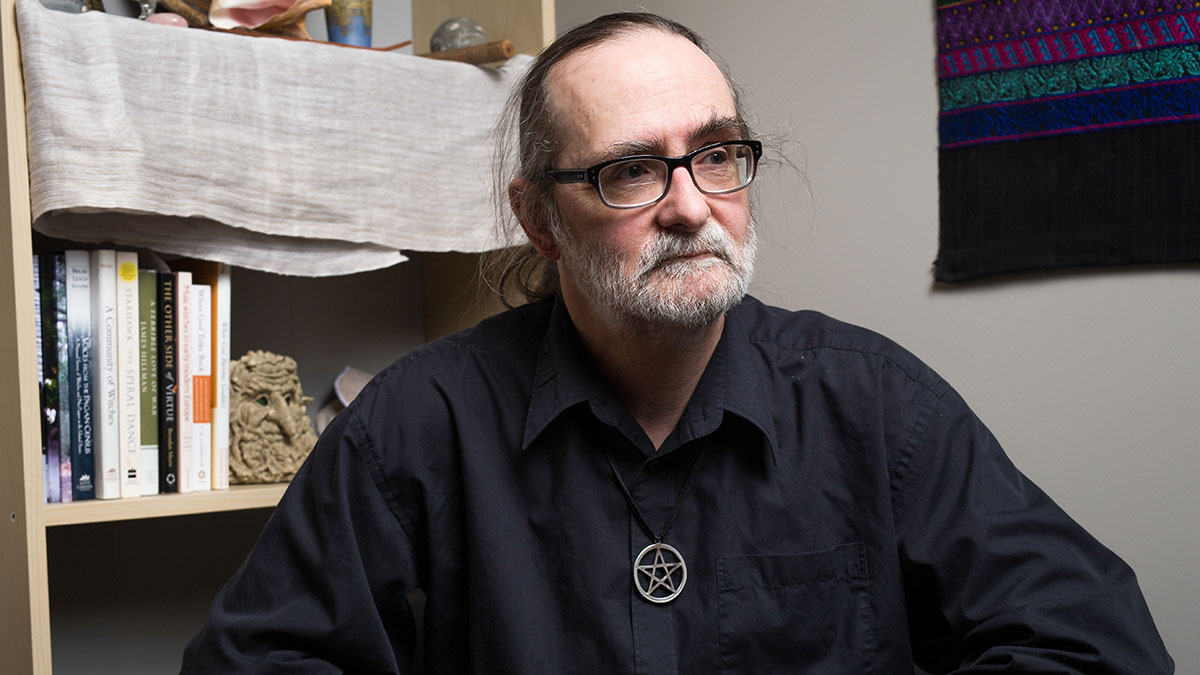Wiccans to celebrate ancient Halloween, Day of the Dead
 Sean Trayner
Sean TraynerAn old Wiccan saying says, “What is remembered, lives.” The idea of life through remembrance is the backbone of both ancient and modern Halloween celebrations.
Samhain, pronounced SOW-en, is the Wiccan celebration of the last harvest of the year, and the time to consult one’s ancestors for guidance. It’s a Sabbat, a Wiccan festival aligned with the lunar and solar cycles. The Sabbat of Samhain in particular is about “putting the world to bed,” University of Alberta Wiccan Chaplain Samuel Wagar said.
Community Samhain celebrations are all different, but usually include a divination where a Wiccan acts as the Crone Goddess and gives ancestral advice to individuals seeking direction. The evening ends with traditional food and drink: pork, apples and nuts.
Wagar still remembers his first Samhain from his early 20s. He had only recently become Pagan, and attended a community celebration at the Wiccan Church of Canada in Toronto. The ceremony was a divination, where a priestess went into a trance and embodied the Pagan Goddess to give advice, which Wagar had thought of as “very cool.”
“I thought it was very moving,” Wagar said. “I liked the idea of talking to the ancestors at this time of year. It felt right to me. It also was helpful to break past the normal fear of death … The idea that the ancestors are available to consult was very heartwarming to me.”
Smaller family celebrations closely resemble a typical Thanksgiving dinner. There’s a traditional feast for the living, but also a plate and candle lit for the dead at the end of the table.
Samhain also includes the classic dressing up and going door-to-door; it’s the parent of today’s secular trick-or-treating. Hundreds of years ago, homeowners would treat disguised anonymous figures as temporarily-returned ancestors and give them gifts. Later, for a lot of European descendants, those gifts became candy.
The feeling that goes though people in Samhain celebrations is one of remembrance, Wagar said. Wiccans reflect on loved ones who have died, and even attempt to communicate with them. This time of year most appropriate, as the late fall is considered by Wiccans to be the time when the veil between the living and the dead is thinnest. Though the ancestors can always be asked for advice, they’re believed to be most communicative in this time of the year, Wagar said.
“Death is in the air,” Wagar said. “It’s a difficult time, especially for people in early agricultural societies.”
Historically, the late Fall was a time of foreboding since there wasn’t always enough harvest to make it through the winter. Winter was a time of risk and death, especially hundreds of years ago. Daily life has since changed considerably, but rituals still are used to recreate the old experiences, Wagar said.
This time of year opens up the opportunity to talk about the fact that everyone will eventually die, something most people avoid talking about on a daily basis. Death is inevitable, so people might as well accept it, Wagar said. The entire process of being alive is much more meaningful if one can understand the beginning and end of it, he added.
“It’s good to remind yourself that life is uncertain,” Wagar said “You have to be to be in good with your family, your community, your ancestors, and the natural world. And Halloween’s a good time to do that.”




